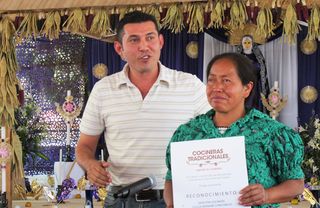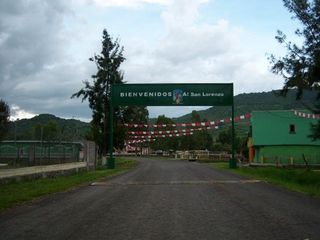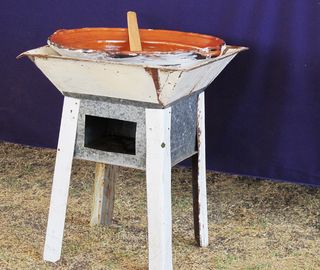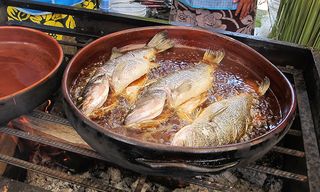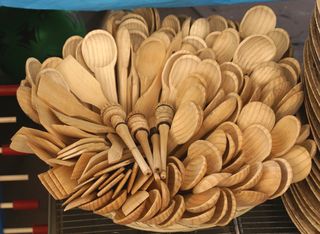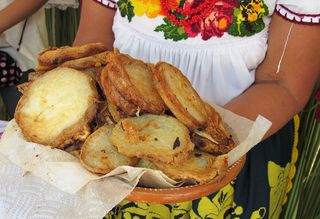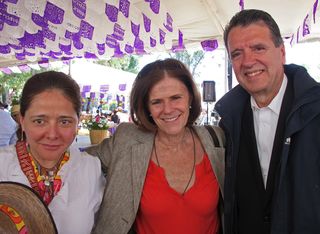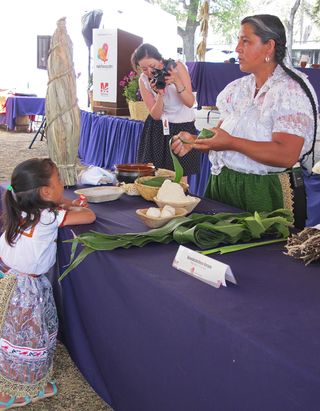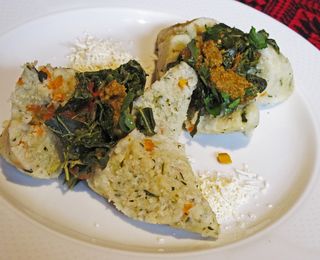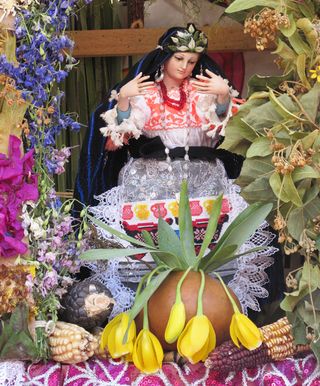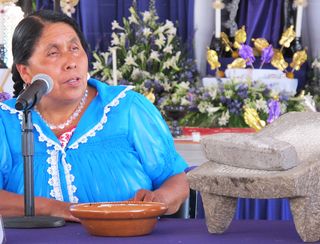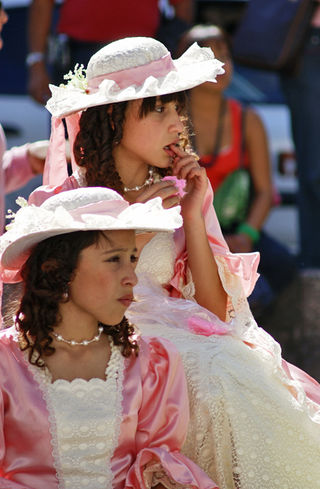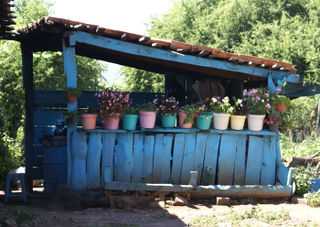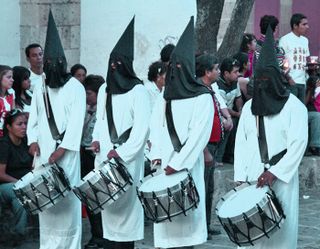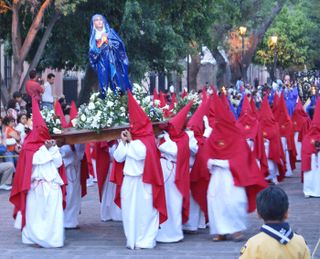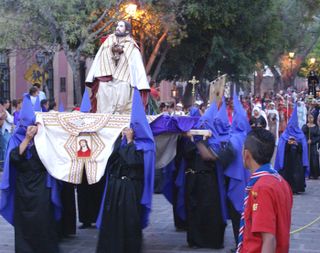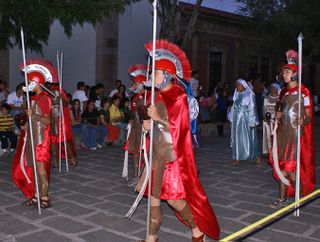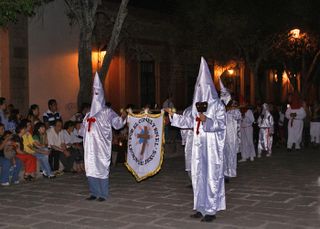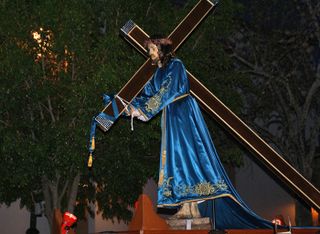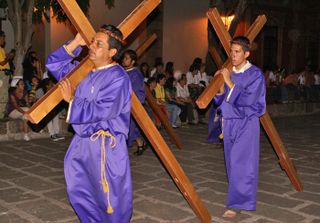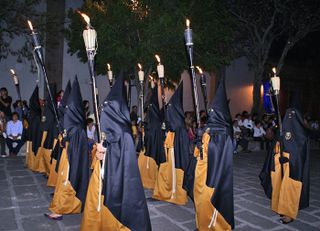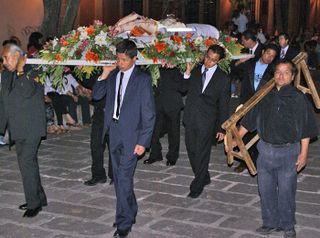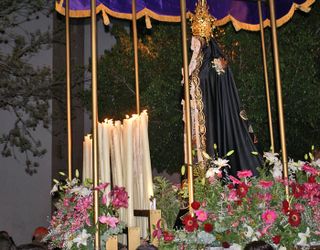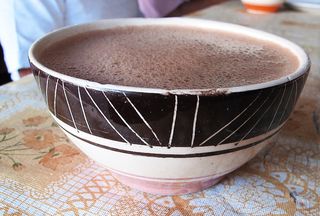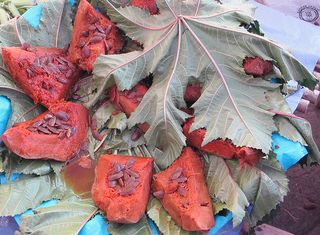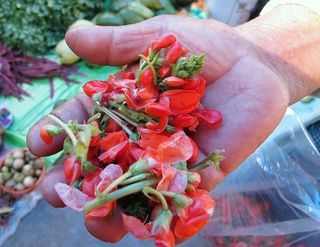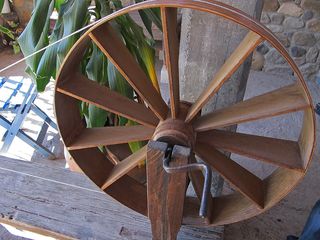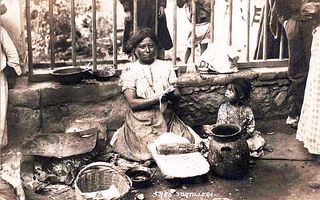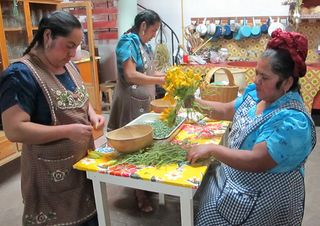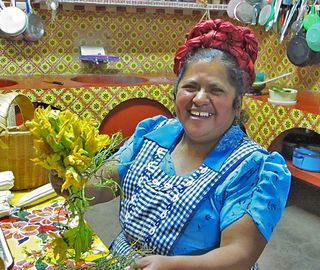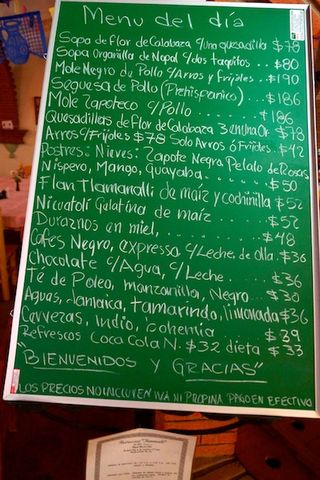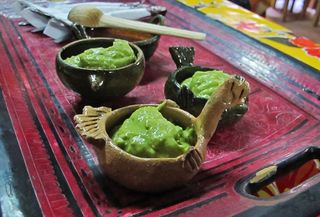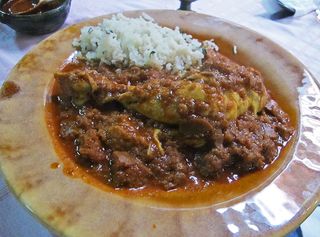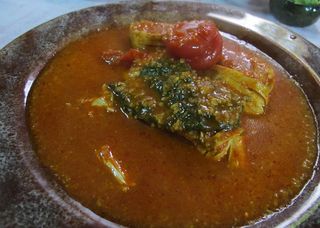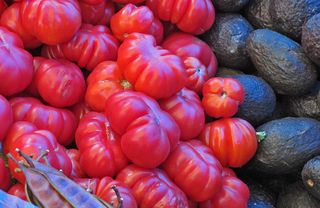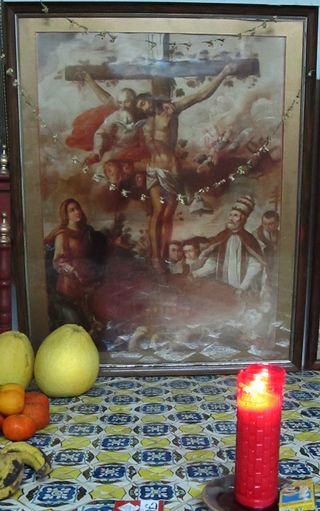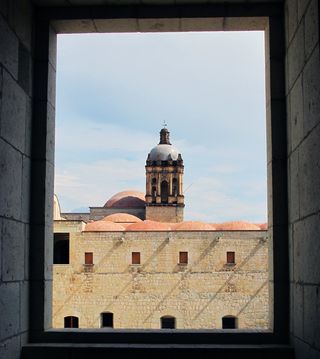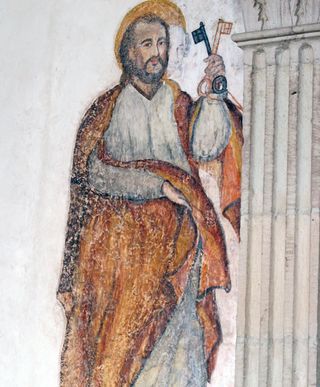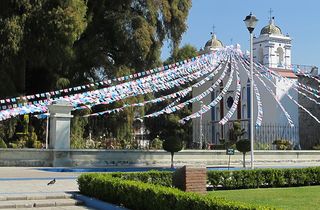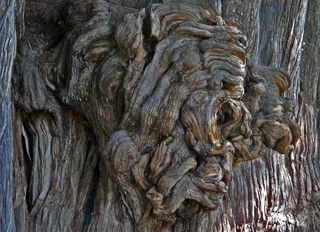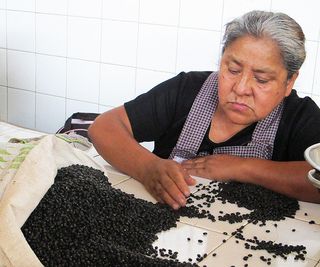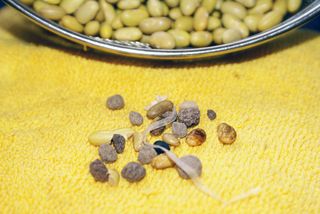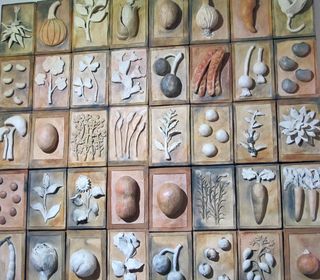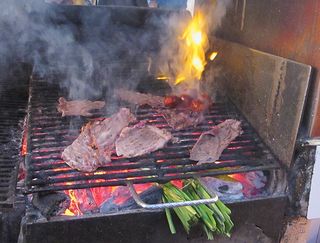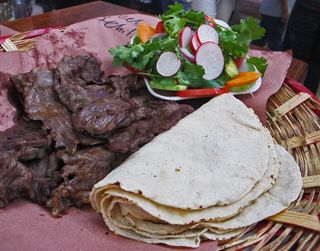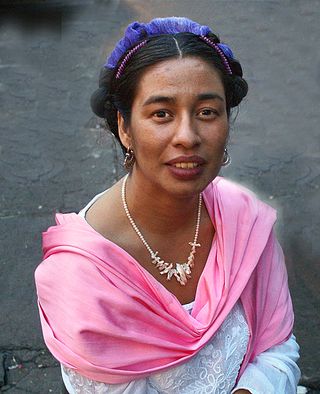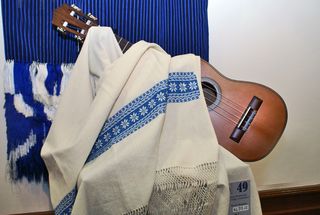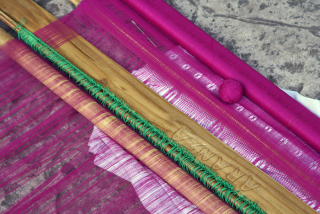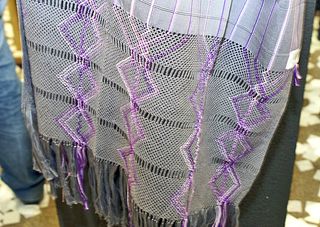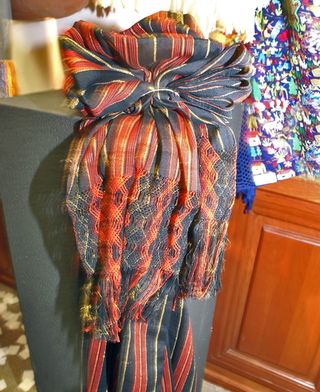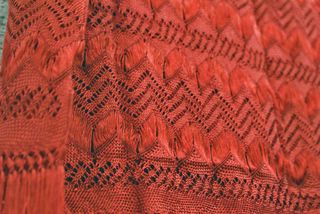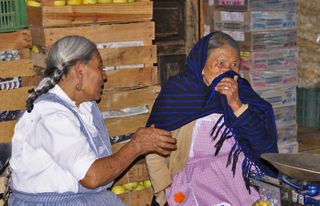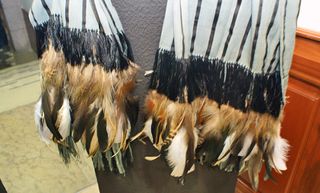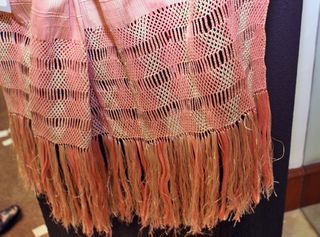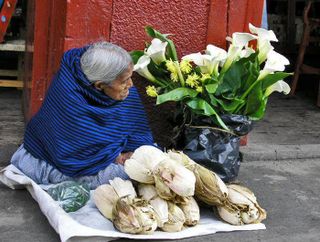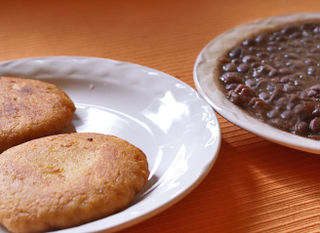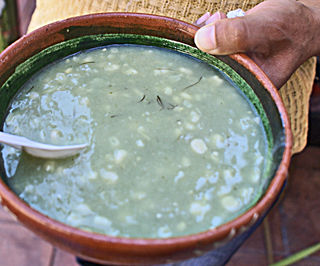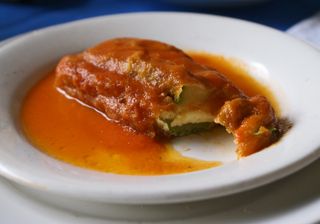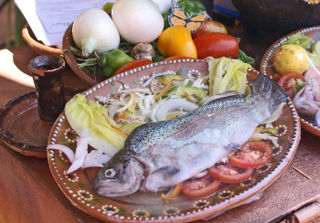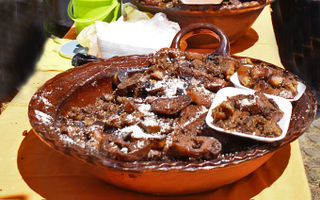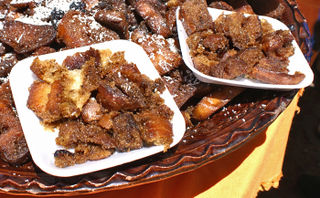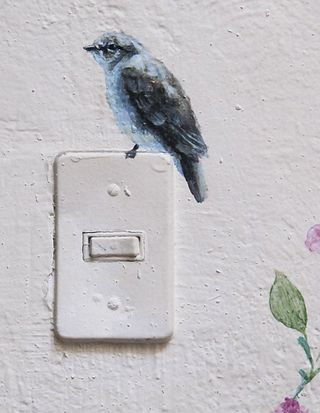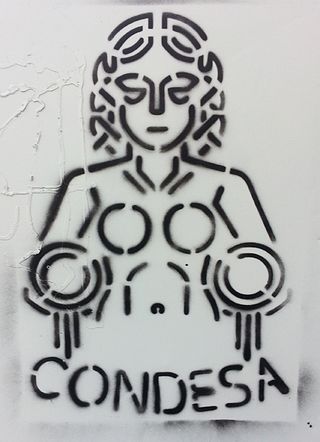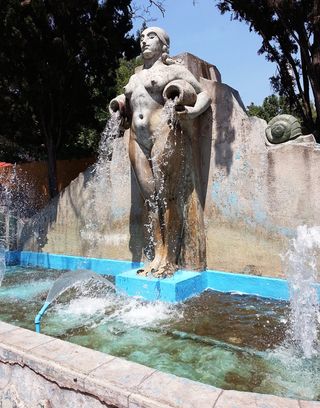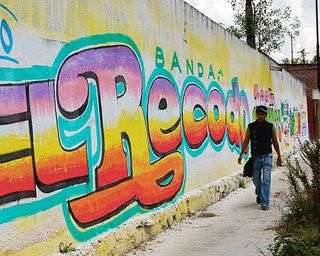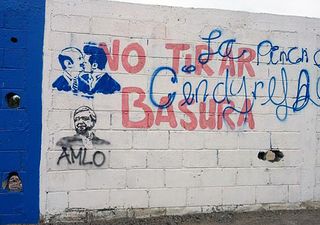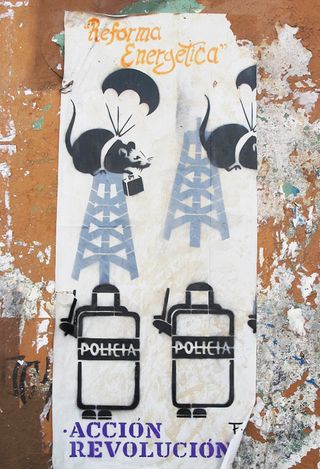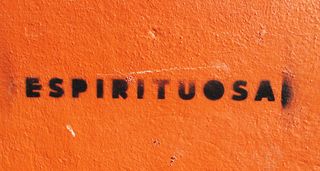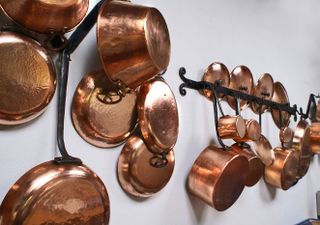
Ana Pellicer and James Metcalf's handmade–by their own hands–copper pots and pans–from their own kitchen–perfectly illustrate Maestra Pellicer's Saturday morning talk explaining the history and uses of copper in the kitchen. By 1450 A.D., the Tarascan (Purépecha) kingdom in the state of Michoacán had become the most important center of pre-hispanic metalworking. Metallurgy played a significant role in the structure of political and economic power in the Tarascan Empire.

Although many people erroneously believe that Don Vasco de Quiroga brought copper work to Michoacán in the 16th century, the excavation and working of copper items predates Don Vasco's arrival by approximately 900 years. Copper was crafted for use in funeral practices, ornaments, and ritual items.

Malachite and copper. Mtra. Pellicer, an internationally renowned copper sculptor, spoke about the connection between malachite and copper ore. She and her husband, the late James Metcalf, were instrumental in developing artisan copper work in Santa Clara del Cobre, Michoacán. Santa Clara is the last home of Mexico's copper art.
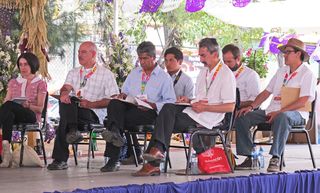
A panel of highly knowledgeable judges concentrates on the presentation of a traditional dish. From left, this panel includes chef Martha Ortiz, restaurateur Roberto González Guzmán, Maestro Benjamín Lucas Ángel, and jefe de cocina Yuri de Gortari, among others.
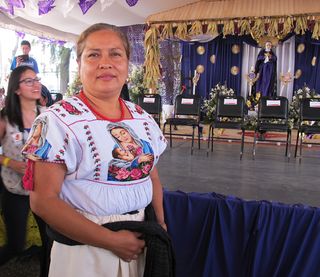
Norma Alicia Urbina Rangel, who lives in Uruapan, Michoacán, wore her most festive finery for the Sunday closing of the eleventh Encuentro de Cocineras Tradicionales. Her hand-embroidered guanengo (traditional Purépecha blouse) features the Virgen María and Niño Dios on the front, back, and sleeves. I asked her if she had made the blouse herself and she laughed. "Señora, my hand is skilled in the kitchen, not for embroidery. I bought it." For this Encuentro, Sra. Urbina competed in the category platillo de rescate ('rescued' dish–one that is now seldom prepared and is at risk of disappearing) with pescado seco capeado en salsa verde (battered dried fish in green sauce).
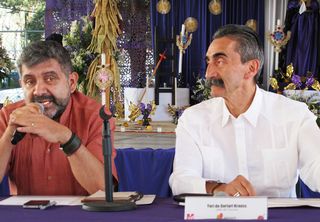
Edmundo Escamilla (left) and Yuri de Gortari, executive co-directors of the Escuela de Gastronomía Mexicana in Mexico City, gave an extraordinary talk about the conjunction of parties and food in Mexico. The two men are a living treasure, repositories of culinary history, techniques, ingredients, art, tradition, folklore, and much, much more. Authors of nine books, they were thrilled to participate in the Encuentro this past April.
As always, Mundo and Yuri gave a marvelous talk, filled with facts, myths, folklore, and tremendous good humor. Beginning with a short history of the caste system in colonial New Spain, they taught us about the body's need for a daily ration of salt, which led to the word salario (sal+diario) (salary), the huge variety of tamales that continues to exist in Mexico (4,000!), and how tamales were prepared in pre-Hispanic days in this country: without fat of any kind, tamales were eaten to celebrate the New Year.
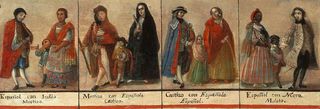
Casta (caste) painting from colonial New Spain. This and many other paintings of the era reflect the importance that the Spanish gave to the mixture of races in the world they had conquered. The Spanish caste system gave rise to ethnic shame in what was eventually to become Mexico. The nomenclature of the mixes is long, and sometimes shocking to our 21st century sensibilities. Click on any photograph to enlarge the image for a better view.
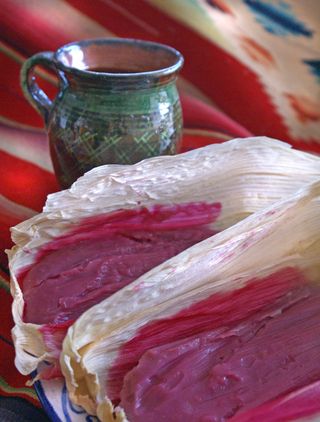
Tamales de zarzamora (blackberry), a sweet Michoacán specialty.
When the Spanish arrived with pigs (think lard) and Catholicism, lard became part of many recipes for tamales: with the addition of lard to corn masa, the tamal became Christian, along with its indigenous cooks. Bendito puerco, bendita manteca! (Blessed pork, blessed lard!)
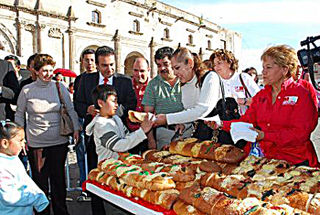
In Morelia every January 6, a giant-size Rosca de Reyes (Three Kings Bread) is dished up to hungry hordes.
Mundo and Yuri pointed out that Christmas feasting includes a fusion of the indigenous Maya belief that corn is our actual flesh and bones, combined with the newly arrived and harvested Spanish wheat which forms the Communion host–in Catholic dogma, the actual body and blood of Christ, which believers (the spiritual body of Christ) consume.
[youtube=://www.youtube.com/watch?v=rABJeZGNFNs&w=420&h=315]
After conclusion of the Sunday conferences and before the prizes were awarded for the XIº Encuentro de Cocineras Tradicionales de Michoacán, many of the cooks, jurors, and festival attendees danced for the sheer joy of it–as the crowd cheered, "Michoacán! Michoacán!". In Mexico Cooks!' video, historian Edmundo Escamilla dances with maestra cocinera Rosalba Morales Bartolo of San Jerónimo, Purenchécuaro, Michoacán.
The next edition of the Encuentro de Cocineras Tradicionales de Michoacán will take place on October 4, 5, and 6, 2014. If you'd like to come with me to see it all, please let me know! Mexico Cooks!' email address is patalarga@gmail.com.
Looking for a tailored-to-your-interests specialized tour in Mexico? Click here: Tours.
